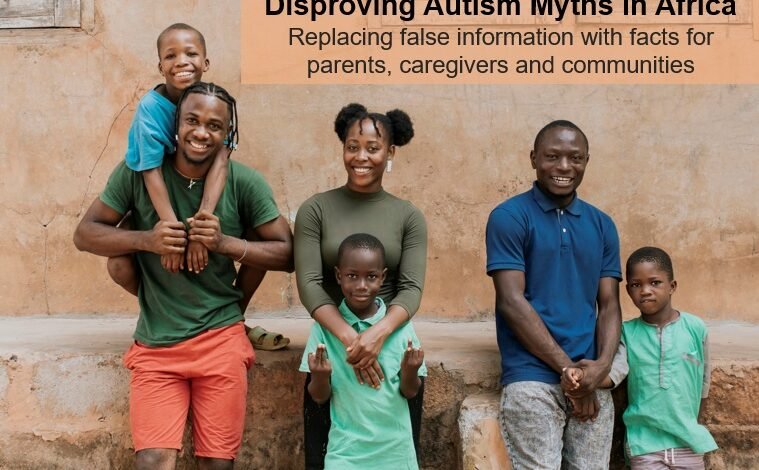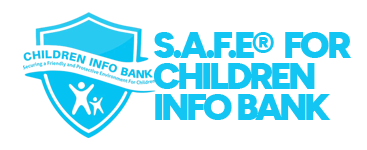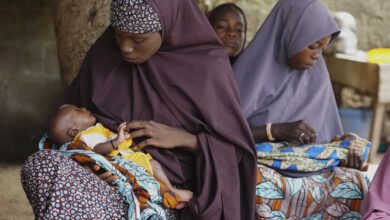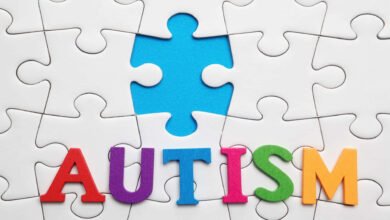Autism in Africa: Myths, Realities, and the Urgent Call for Awareness

Introduction
Globally, autism spectrum disorder (ASD) has received increasing attention in research, advocacy, and policy. However, much of this conversation is dominated by the United States and Europe, leaving Africa’s realities underexplored and misunderstood. Autism in Africa is not rare, studies suggest prevalence is similar to other parts of the world but limited awareness, stigma, underdiagnosis, and lack of resources make it an invisible public health issue across the continent.
Families of autistic children often struggle in silence, navigating a web of cultural myths, systemic neglect, and emotional and financial strain. While progress is emerging in advocacy, research, and policy, the path forward requires a sustained, context-specific, and inclusive response.
Autism in Africa: The Research and the Gaps
Accurate data on autism prevalence in Africa is scarce due to limited large-scale epidemiological studies.
- Nigeria: With over 200 million people, Nigeria has no national policy on neurodevelopmental disorders. Studies in pediatric neurology clinics between 2007–2012 showed prevalence rates of 1 in 43.5 in South-West Nigeria and 1 in 125 in the South-East. A 2014 hospital-based study estimated 2.3% nationwide prevalence, translating to at least 600,000 affected children. These figures, while staggering, are likely underestimates given stigma and underreporting.
- South Africa: Estimates suggest 270,000 individuals live with autism, with about 5,000 new cases annually. Yet, prevalence studies are localized and inconsistent, Western Cape province studies report rates as low as 0.01%–0.08% among school children. This underlines the urgent need for nationwide data.
- Other African nations: Egypt, Kenya, and Ghana have begun research initiatives, but large-scale, community-based studies across sub-Saharan Africa remain limited.
The lack of reliable data reinforces the misconception that autism is rare in Africa, when in reality, it is under-detected and under-reported.
Key Challenges Facing Autism in Africa
- Cultural Beliefs and Stigma
Autism is often misinterpreted as witchcraft, spiritual punishment, or demonic possession. Families are blamed, particularly mothers, who may face social ostracism. Many children are hidden away from public view to avoid shame, cutting them off from education, diagnosis, and care.
- Diagnostic and Treatment Barriers
- Shortage of professionals: There are too few trained neurologists, psychiatrists, speech therapists, or occupational therapists.
- Urban concentration of services: Diagnostic and therapeutic resources are largely in major cities, inaccessible to rural populations.
- Culturally inappropriate tools: Western-based diagnostic criteria are often unsuitable for African contexts, leading to misdiagnosis.
- Late diagnosis: Many children are diagnosed far later than in high-income countries, missing the critical early intervention window.
- Cost: Therapies and specialized schooling are expensive, with little to no government subsidy.
- Unproven Therapies
Due to lack of access to evidence-based interventions, many families resort to traditional healers, herbal remedies, or spiritual practices that have no scientific backing. While prayer and cultural practices may provide comfort, they cannot replace medical and developmental support.
Myths and Realities of Autism in Africa
| Myth | Fact |
| Autism is caused by witchcraft or spiritual forces | Autism is linked to genetic, environmental, and prenatal risk factors, not supernatural forces. |
| Autism is contagious | Autism is not infectious. You cannot “catch” autism from contact or play. |
| Vaccines cause autism | No scientific evidence supports this claim. Vaccine hesitancy based on this myth puts children at risk of preventable diseases. |
| People with autism cannot learn or succeed | Autistic individuals can thrive academically, socially, and professionally when given appropriate support. |
| All autistic people behave the same | Autism is a spectrum, with a wide variety of strengths and challenges. |
| Autism can be cured with prayers or herbs | Autism has no cure. However, early intervention therapies greatly improve outcomes. |
| Autistic individuals are violent | Aggression is not inherent to autism. Behavioural challenges often arise from communication difficulties, anxiety, or sensory overload. |
These myths fuel stigma, isolation, and mistreatment of autistic individuals and their families. Disproving them is essential for fostering acceptance and inclusion.
The Role of Family, Culture, and Religion
In African society, family reputation and children’s success are deeply tied to cultural and religious expectations. When a child does not meet these expectations due to autism, parents especially mothers; are shamed, blamed, or pressured into seeking spiritual remedies.
Cultural and religious leaders, therefore, play a pivotal role in either perpetuating harmful myths or championing accurate awareness. Efforts to engage these leaders in awareness campaigns are essential for shifting mindsets.
Progress and Pathways Forward
Despite the barriers, promising efforts are underway:
- Advocacy: Groups like the Kenya Autism Alliance and the Ike Foundation for Autism (Nigeria) are fighting stigma and supporting families.
- Culturally adapted tools: Nigerian Autism Screening Questionnaire (NASQ), a 26-item tool designed to screen for autism spectrum disorder (ASD) symptoms in Nigeria and other localized tools are making diagnosis more relevant and accessible.
- Policy: South Africa has incorporated disability rights into legislation and early childhood policies. Other African nations are slowly following.
- Technology: Tele-therapy and digitized screening apps are expanding access to diagnosis and intervention in underserved areas.
- Research: Universities and medical institutes in Egypt, South Africa, and Nigeria are deepening studies into autism’s genetic, environmental, and cultural aspects.
Why Disproving Autism Myths Matters
Breaking myths and spreading accurate information has tangible benefits:
- Encourages early detection and intervention
- Reduces stigma and isolation for families
- Improves educational and healthcare outcomes
- Promotes inclusion and dignity for autistic individuals
- Strengthens policy advocacy for better funding and services
What Can Be Done: Collective Action
Everyone; families, schools, governments, professionals, religious leaders, and communities, has a role to play:
- Educate yourself and others using credible sources (WHO, CDC, NHS, Autism Speaks Africa initiatives).
- Challenge harmful myths within families, schools, and faith communities.
- Advocate for policy reform that recognizes autism as a neurodevelopmental disorder and funds services.
- Support research to generate Africa-specific data on prevalence and interventions.
- Train community health workers to raise awareness, identify cases early, and connect families with resources.
- Promote inclusive education so autistic children can learn alongside their peers with appropriate support.
Conclusion
Autism in Africa is real, widespread, and deeply misunderstood. The weight of cultural stigma, lack of research, and systemic neglect has left many autistic children and their families in the shadows. Yet, progress is possible. By confronting myths, investing in culturally adapted research and tools, and promoting awareness at every level of society, Africa can ensure that autistic individuals are not hidden but celebrated as valuable members of their communities.





